Shady Things About Starbucks' Menu
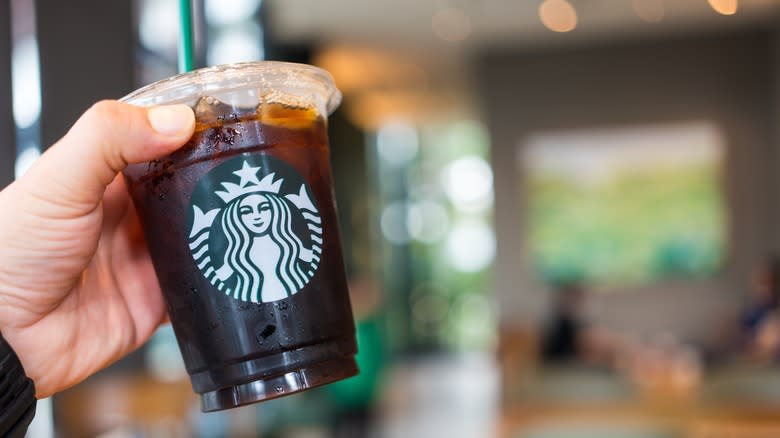
With over 38,000 locations dotted across the globe, you're never too far from a Starbucks. The world's most omnipresent coffeehouse has our caffeine cravings in a chokehold, with some of its drinks -- such as the Pumpkin Spice Latte and Frappuccinos -- becoming cultural touchstones in their own right. But as with most businesses of this size, Starbucks is not totally without controversy. Since the first location opened at Seattle's famous Pike Place Market in 1971, the chain has faced more than its fair share of criticism.
A lot of these scandals are linked to its actual business practices. Back in 2022, for example, Starbucks was accused of union busting, having fired multiple employees directly involved with organizing at its stores and creating a "culture of fear" in the process (via The Guardian). Other scandals have more to do with the actual coffee than anything else. While Starbucks has become synonymous with coffee culture and generated a whopping $35.98 billion in revenue in 2023, it doesn't necessarily have the best reputation with those who've caught on to some of the shadier truths behind its menu.
Before you shell out $6.45 on your next Flat White, here are 10 things Starbucks doesn't want you to know about its menu -- from how it secures its coffee beans, to the sneaky ways it prices its products.
Read more: How To Get More Flavor From Your Coffee Pods & Other Keurig Hacks
Its Refreshers Don't Always Contain The Fruit You'd Think
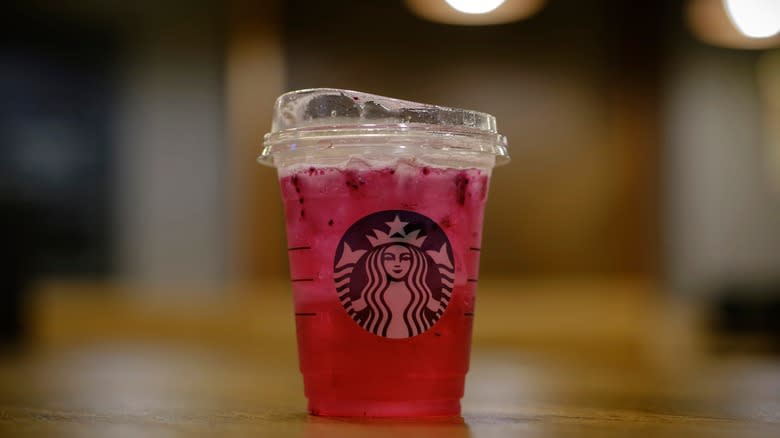
Starbucks Refreshers are a go-to for the coffee-averse and sweet tooths alike. First introduced in 2012, these combine fruity flavors with iced lemonade (and, in some cases, green coffee flavor). The lineup is always changing, with seasonal varieties often added in the summer, but the core options are typically Strawberry Açaí, Mango Dragonfruit, and Pineapple Passionfruit.
Don't let the names fool you. In 2023, Starbucks was hit by a class action lawsuit due to claims that it misleads customers over the true contents of its Refreshers. Customer Joan Kominis filed the original lawsuit in 2022, arguing that she was duped into paying a premium for the drinks under the assumption that they include the fruits in their names -- which they do not. For example, Strawberry Açaí does contain freeze-dried strawberries, but there's no açaí in the ingredients list. Similarly, Mango Dragonfruit is free of any actual dragonfruit, while the only fruit in the Pineapple Passionfruit is pineapple.
Starbucks has argued that "no reasonable consumer would be misled by the products' names into thinking that the products contain the missing fruit," adding that the names refer to the flavors, not the ingredients, and baristas can always clarify what's in your drink (via Forbes). While the latter is true, we don't think it's too much of a stretch to expect a drink that's called "Mango Dragonfruit" to contain both components of its name.
Customers Pay Extra For Non-Dairy Milk (But Starbucks Doesn't)
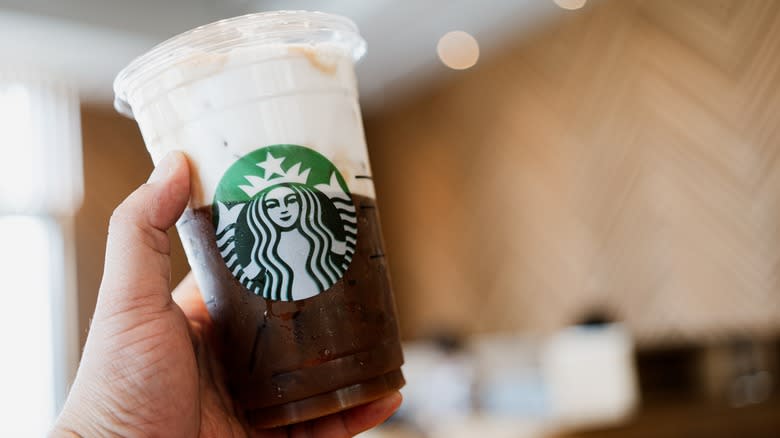
Non-dairy milks have become increasingly popular in recent years, fueled not just by the lactose intolerant or those with dairy allergies but also people looking to lower their environmental impact. That's what makes it all the more shocking that multiple coffee chains, Starbucks included, still charge between $0.50 and $0.80 more for non-dairy alternatives such as coconut, almond, soy, or oat milk.
In March 2024, three customers put their foot down and banded together to file a lawsuit against Starbucks in California. Their lawyers accused the coffeehouse of making approximately $1 billion "as a result of its discriminatory and illegal levying" (via Business Insider). The crux of their case is that charging customers more for a dairy-free option that may be necessary due to their allergies violates both the Americans with Disabilities Act and the California Unruh Civil Rights Act, essentially making it "illegal price discrimination."
This isn't the first time Starbucks has been sued over milk. Similar lawsuits have been filed in Florida, Colorado, and Canada. Frustratingly, dairy-free milk is already available at no extra cost in Starbucks stores in the likes of Japan and the U.K., which is proof that it's certainly possible. As the Consumer Law Group points out, dairy-free milk also rarely -- if ever -- costs more on a supplier level than regular milk. You may want to remember that the next time you're asked to shell out $0.85 extra for an iced oat latte.
Brewed Coffee May Not Be Fresh In The Afternoon
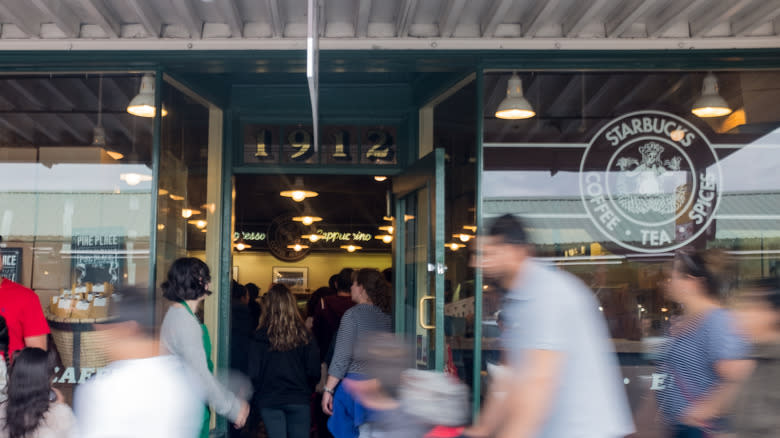
Brewed coffee is among the cheaper drink options at Starbucks, with four varieties listed on the menu: Blonde Roast, Medium Pike Place Roast, Dark Roast, and Decaf Pike Place Roast. Blonde Roast is the go-to if you're after something light, while Dark Roast sits at the other end of the "super strong coffee" spectrum. No matter which roast you go for, they are all theoretically dumped and brewed anew every 30 minutes, meaning that you'll get a fresh coffee no matter what time of day you drop by the store.
But like we said, that's just theoretical. A former barista previously admitted to Business Insider that as Starbucks stores typically see most of their traffic before 10 a.m., it's common to stop brewing every roast fresh around midday. They claimed that while the most popular roast, Medium Pike Place, is brewed throughout the day, the other options will often just be brewed as needed.
Another alleged Starbucks barista corroborated this fact on Reddit, adding that "Pike Place Roast is the only roast that every Starbucks store across the world is required to have brewed and ready all day for customers. Plain drip coffee becomes less popular as the morning passes, so once we start selling 1 or less every 30 minute brew cycle, we stop brewing dark and blonde roasts." So, if you order a non-Medium Pike Place brewed coffee mid-afternoon, there's a higher chance of receiving a stale drink. Yummy.
Its Products Aren't As Ethically Sourced As You'd Think
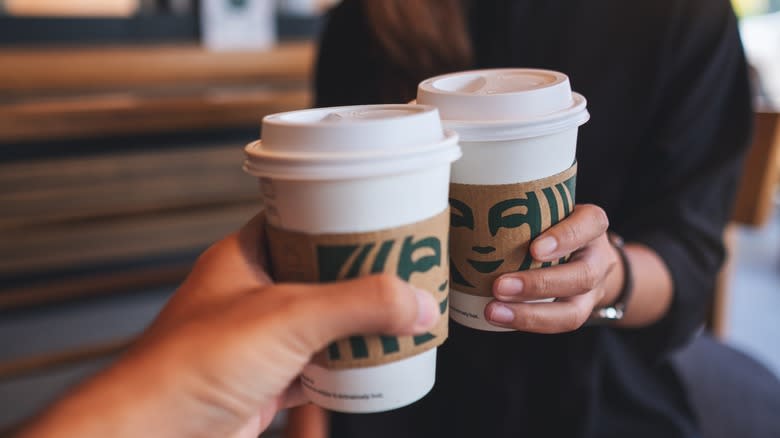
If you've ever read the labels or packaging at Starbucks, you've probably come across the chain's promise that it is 100% committed to ethical sourcing. As it turns out, this may not be entirely true. In January 2024, the National Consumers League filed a lawsuit against Starbucks claiming that it's misleading customers since it actually sources coffee beans and tea leaves from farms and cooperatives with known human rights and labor issues.
More specifically, the lawsuit claimed that producers in Starbucks' supply chain are guilty of "child labor and forced labor as well as rampant and egregious sexual harassment and assault" (via The Washington Post). As per CNN, one incident singled out by the case occurred in Brazil in 2022, when a labor prosecutor complained that a supplier's working conditions were "analogous to slavery, including illegally trafficking more than 30 migrant workers."
This case is still ongoing as of the time of writing, but Starbucks has made it clear that it denies these allegations. A statement on the company website by the Executive Vice President of Global Coffee, Social Impact & Sustainability, Michelle Burns, reads, "this feels personal" and "our ethical sourcing program is best-in-class." However, this isn't the first time Starbucks has faced these kinds of accusations. In 2020, an investigation by British broadcaster Channel 4 found that of five farms in Guatemala that supply Starbucks' coffee beans, there was evidence of child labor at each location.
Several Products Have Allegedly Fallen Victim To Shrinkflation
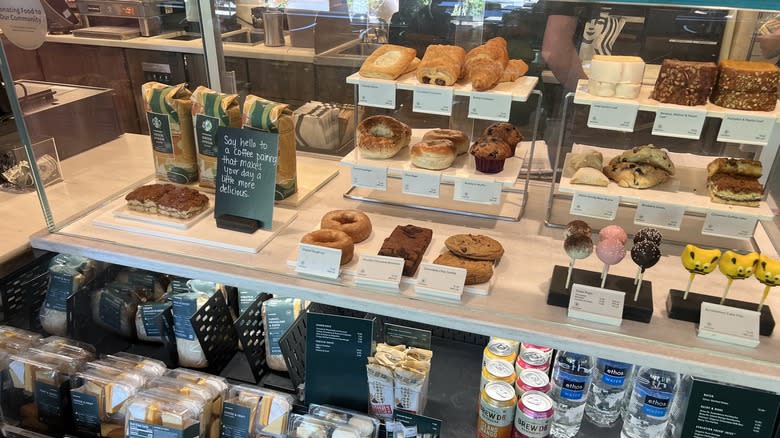
In this day and age, is there a restaurant or coffee shop that hasn't been accused of shrinkflation? As the cost of living increases, multiple businesses -- including those in the food industry -- have been blamed for reducing the size of their products while maintaining (or even increasing) the price tags. Starbucks is no exception, with customers and employees alike flocking to social media to point out the dwindling size of its offerings.
The most common cause of complaint are the sandwiches. One Starbucks employee took to Reddit to compare the size of the old and new stock of Crispy Grilled Cheeses, pointing out that "the new sandwiches are at least 2 inches shorter." Another user agreed, noting that "this, the egg bites, bacon gouda, and the sausage wrap are so much smaller. Like I love the egg bites but honestly imma need 4 during my lunch with how small they've been getting."
As one alleged longtime Starbucks employee noted on the same thread, "I'm a 10.5 year partner and the amount things have shrunk over the years is insane." For more visual proof, one customer shared a video on TikTok showing the shockingly small size of a Starbucks bagel in September 2023. The bagel was the size of their palm and small enough to fit under the accompanying tub of cream cheese spread. As they hashtagged in their caption, this is truly "late stage capitalism blues."
The Eggs Aren't Actually Just Eggs
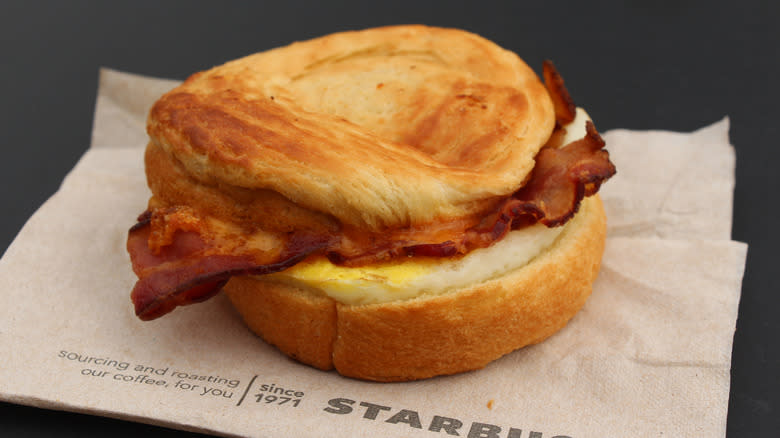
Starbucks may give its breakfast sandwiches names like "Chicken, Maple Butter & Egg Sandwich," but you'd be wrong if you thought that was just a straight-up egg in your morning meal. The chain's sandwiches actually contain various kinds of processed egg patties made up of many more ingredients than you would expect.
In the Sausage, Cheddar & Egg Sandwich, you'll find a "puffed scramble egg patty" that contains the likes of soybean oil, butter flavor, guar gum, xanthan gum, and more, to round out the egg and milk mixture. Needless to say, those ingredients aren't natural additions that come courtesy of the chicken itself. Meanwhile, the Egg, Pesto & Mozzarella Sandwich features an "egg frittata patty" made up of a long and varied list of ingredients beyond eggs, such as unmodified corn starch, microbial enzymes, mirin, milk protein concentrate, and maltodextrin.
Admittedly, some of the egg patties are less processed than others. For example, the Double-Smoked Bacon, Cheddar & Egg Sandwich uses a "fried egg patty" that blends egg whites and egg yolk with just milk, food starch, salt, and citric acid. Starbucks also isn't the only chain that doesn't use 100% egg in its breakfast items, with the likes of Dunkin', Burger King and Wendy's also crafting egg patties using other ingredients. Regardless, if you care about avoiding processed ingredients, you may want to double-check the nutritional information on the packaging the next time you pick up breakfast on the go.
There May Be An Extra Charge If You Want Your Drink Without Water Or Ice
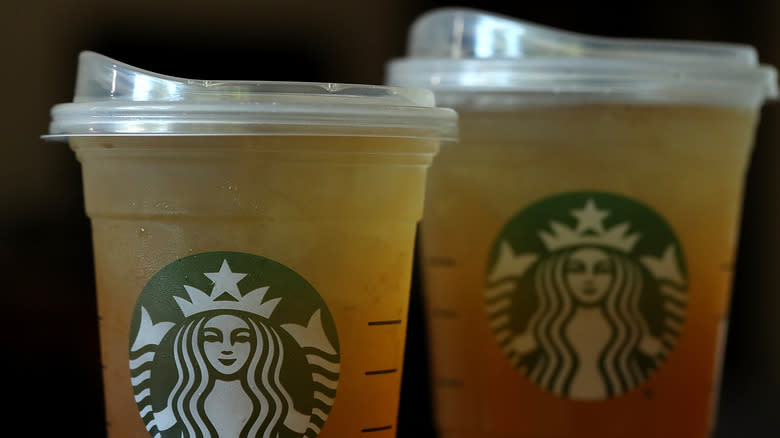
No matter what Starbucks Refresher you order, the reality is that a significant portion of your drink will be water. There was a time when customers tried to make their Refreshers stronger (and get more bang for their buck) by requesting that their drink be made with more fruity base and no water. However, Starbucks tightened the reins on this hack in 2022 by introducing a new $1 upcharge under the argument that doing so "requires extra ingredients" (via CNN).
Frustrating though it is to pay an extra dollar to remove an ingredient from your drink, that's nothing compared to the frustrations shared by those who've been asked to pay extra for no ice. While Starbucks has denied that it charges more to remove the ice from your drink, alleged employees have claimed on Reddit that it is common practice at its licensed stores but could be the result of employees getting confused with the no water charge. If you do get charged for no ice, the charge itself is inconsistent and seemingly varies from store to store. Customers have recalled paying everything from $0.50 to $1 for the honor of a no-ice or low-ice drink.
Bigger Drinks Don't Necessarily Contain More Coffee
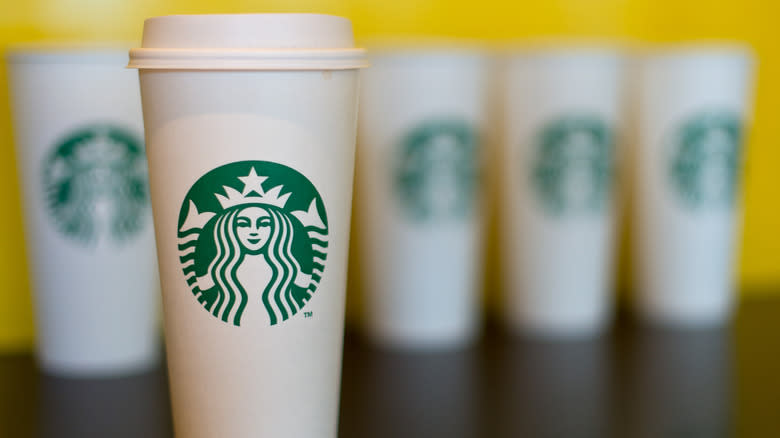
Logically, you'd think that if you were paying more for a bigger coffee in a coffee shop that you'd get, well, more coffee. If you're at Starbucks, however, that's not necessarily true. If you go from a Tall (12 ounces) to a Grande (16 ounces), you'll go from one shot of espresso to two. However, if you splash out on a Venti coffee (20 ounces), the only thing you're getting is more milk and syrup, as it also contains just the two shots of espresso.
If you're in the market for a caffeine boost, you can always pay more for an extra shot of espresso in your Venti coffee -- even if it is mildly irritating when you've already paid more to get a bigger cup in the first place. Alternatively, there is another way to get a stronger coffee. While there's no extra espresso in a hot Grande coffee versus a hot Venti coffee, you do automatically get a third shot of espresso when leveling up the size of an iced drink. Remember that the next time you find yourself flagging mid-afternoon.
There's Controversy Over Its Decaf Coffee
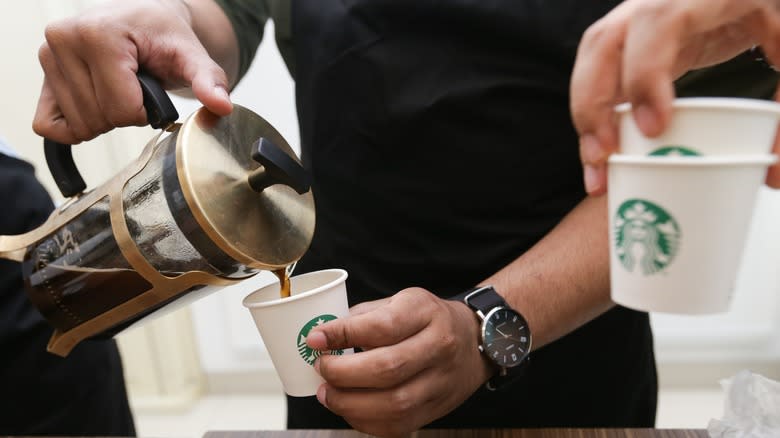
There are a few different ways to make decaffeinated coffee. Starbucks, like many coffee chains, primarily uses the European method, also known as the Direct Contact Method. This involves steaming green coffee beans before washing them with a solvent that bonds with the caffeine. The beans are then roasted at over 400 F to evaporate the remaining liquids (and most of the caffeine in the process), and behold: decaf coffee.
It sounds straightforward enough, but this method isn't without its controversy. The aforementioned solvent is often methylene chloride, which the Occupational Safety and Health Administration (OSHA) has deemed a potential carcinogen. It was previously also used in paint stripper until it was banned under the Toxic Substances Control Act in April 2024 due to the risks presented by repeat exposure.
While William (Bill) Murray (the president and CEO of the National Coffee Association, not the actor) has insisted there's not enough evidence to suggest this decaffeination method is harmful, a bill criminalizing the production or sale of coffee made with methylene chloride was proposed in California in April 2024. The Environmental Defense Fund also released a petition asking the U.S. Food and Drug Administration to consider banning methylene chloride in all food -- which would ultimately impact Starbucks, as well as other major coffee chains such as Dunkin', if it did come to pass.
Its Gift Card Scheme Is Carefully Designed So You Can't Spend Your Entire Balance
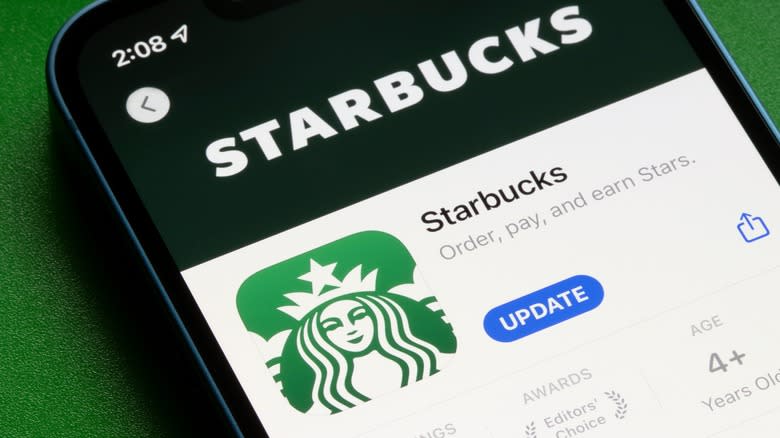
Starbucks boasts the second most-used mobile payment app in the U.S. after Apple Pay, processing more payments than the likes of Google Pay and Samsung Pay. While it's useful for placing advance mobile orders to skip the line in-store -- not to mention collecting rewards (or "Stars") for free drinks -- a less customer-friendly aspect to the app was put under the spotlight in December 2023, courtesy of the Washington Consumer Protection Coalition.
The consumer watchdog group filed a 15-page complaint accusing the app of structuring its system so that it's near-impossible for users to spend every cent they load. It claims that certain rules and restrictions -- such as only allowing users to add money in $5 increments, requiring a $10 minimum to get started , and giving you fixed tip options -- mean that you're trapped in a cycle of loading more money, without ever hitting a balance of zero.
"Starbucks rigs its payment platform so consumers are encouraged to leave unspent money on their cards and apps," said Chris Carter, campaign manager for the Washington Consumer Protection Coalition (via Fortune). "A few dollars here and there left on a payment platform may not sound like a lot but it adds up." Case in point: The group alleges there's a balance of nearly $900 million in unspent gift card and app money, which Starbucks has claimed as its own revenue.
Read the original article on Mashed.

 Yahoo Finance
Yahoo Finance 